crwdns2915892:0crwdne2915892:0
Update 4/3
We have taken apart a production iPad, with much higher resolution photos.
FCC Photo Analysis
The FCC was kind enough to show the internals of the WiFi iPad before it was released! The photos that they put up had the interesting bits hidden behind grey squares, but we were able to extract the raw files! The WiFi iPad is officially Apple model A1219, while the 3G iPad is A1337.
Apple requested this information stay concealed until August 17th. Clearly, the FCC ignored them.
Note: This is not a traditional iFixit teardown. These photos are not up to our normal quality standards, and it's quite difficult to perform analysis on the low-resolution files. We will be doing a real teardown of the iPad on April 3, the moment we get our pre-ordered units.
Update: 3G iPad
We have uncovered internal photos of the 3G iPad, which won't be released for at least a month! Starting at step 14.
Just want the highlights? Stay tuned to @ifixit for news as we unveil it.
-
-
Performing analysis as we go. Please help out in the comments! To see highest resolution files, log in and you'll get a large option on each photo.
-
One word of caution: This is likely a preproduction board, and Apple very well may have changed some suppliers since they gave the FCC a sample unit. Take this data with a grain of salt until we are able to analyze a production model tomorrow.
-
It looks like there is a LOT of epoxy holding these chips down to the board. More than we've seen before— Apple is really serious about durability on this thing.
-
2x Toshiba Flash
-
Apple A4
-
Broadcom BCM5973
-
-
-
Bottom of logic board, with and without the EMI shield.
-
We're very happy to report that Apple didn't solder the battery! The iPad uses the same battery attachment system as the iPhone 3G and 3GS.
-
It looks like this board was made by AT&S. It will be interesting to see if their marking remains in the final production board. We haven't seen Apple's PCB manufacturers brand their boards before.
$5 says the jack on the bottom right is where the 3G/GPS unit plugs in.
-
-
-
This cable carries the signal from the dock connector to the logic board.
-
Never one to waste space, Apple also managed to tack the wifi and bluetooth boards onto this cable.
-
Like some other Apple devices we've seen, the home button is low-tech. There's two contact points that mate with pads on the display assembly. When the button is pressed, the circuit is completed.
-
Notably lacking from this RF/data cable is anything GPS related.
The GPS is part of the 3G options package, so I'd be surprised if it did exist on this one.
crwdns2936937:0Frankcrwdne2936937:0
The GPS is part of the 3G options package, so I'd be surprised if it did exist on this one.
i am also very interested about that, everyone is saying there is not GPS on the wifi only on the 3g, they dropped the ball not putting it on the wifi model,or maybe it will secretly work if you tether your data connection to it when your on the go :0)
crwdns2936937:0martin przybylskicrwdne2936937:0
i am also very interested about that, everyone is saying there is not GPS on the wifi only on the 3g, they dropped the ball not putting it on the wifi model,or maybe it will secretly work if you tether your data connection to it when your on the go :0)
The iPhone uses a A-GPS, it needs cell towers to tell where it is, if the iPad does not have 3G in it, it can't tell where it is.
crwdns2936937:0Seshancrwdne2936937:0
The iPhone uses a A-GPS, it needs cell towers to tell where it is, if the iPad does not have 3G in it, it can't tell where it is.
NO, NO, NO... A-GPS is REAL GPS that also can use cell towers to assist in finding a location quickly at startup or when the satellite signal is low. This is why an iPhone can find where you are magnitudes faster than most GPS devices in use for cars.
-
-
-
Wi-fi and Bluetooth are integrated into a single board. Broadcom has been one of Apple's favorite suppliers recently. It's possible this is the same BCM4329 chip that Apple used in the 3rd Gen Touch.
-
Laser engraved on the cover:
-
X17B ES2.0-A4
-
APN 339S0107
-
USI 20091207
-
The bracket shown in the second picture is both a cable clip and a ground point for the WiFi/Bluetooth/cable assembly.
-
-
-
A shot of the speaker assembly.
-
The dual speakers provide mono sound. Two small sealed channels direct sound toward three audio ports carved into the bottom edge of the iPad.
looks like sound to me ;)
Speaker?
-
-
-
The inner side of the display assembly.
-
The part number is hard to make out, but it looks to be LP097X02. If that's correct, then the display is made by LG-Phillips.
-
This is very likely the most expensive part of the iPad. It uses expensive IPS (in-plane switching) technology and is LED backlit (as opposed to the cheaper TN and CCFL backlit).
-
Display LED barcodes: 1579CN7346569 3225 LG0NJ 'GK65284221MTA', and 5091L-0942B 091214 R51 K319CED5D61R0094B2
The part number looks more like LP097X82 to me.
I dont know if this changes anything. But the display reads LP497X82.
crwdns2936937:0Jon Mansooricrwdne2936937:0
I dont know if this changes anything. But the display reads LP497X82.
and this is important because?!?
Well, it's nice that you can see how the device is held together. See those dark, presumably spring-loaded clips around the edge of the display? You'll have to release them to pop the display part from the bottom case. Maybe you can use razor blades to release the clips on two adjacent sides, allow the display to be angled out? Doesn't seem easy. The bottom probably has a bit of a lip to keep each clip firmly in place. Maybe if you had an array of suction cups, you could just pull the display out with force? Worst comes to worst, you can drill a small hole through the case, adjacent to each clip, then push in the clip with a pin to release it; afterward you fill in the holes and carefully clean all the metal filings. I doubt it would be that bad: Apple themselves need a way to get in.
The model number looks like LP097X02 to me, which returns google hits, and which makes more sense.
crwdns2936937:0Nils Enevoldsencrwdne2936937:0
The model number looks like LP097X02 to me, which returns google hits, and which makes more sense.
yer i googled it too and it came up with LG LED LCD screen panal
In the screen assembly, on the top-right, the flexible with the large connector should be the touchpanel cable to the logic board. According to our picture (http://bit.ly/9AgX1T, sorry it's in spanish) it pass through the screen assembly frame.
According to http://bit.ly/9AgX1T, on the right the clips are part of the frame and they're rigid. So you may open the iPad up from the LEFT SIDE.
crwdns2936937:0CityZcrwdne2936937:0
Well, it's nice that you can see how the device is held together. See those dark, presumably spring-loaded clips around the edge of the display? You'll have to release them to pop the display part from the bottom case. Maybe you can use razor blades to release the clips on two adjacent sides, allow the display to be angled out? Doesn't seem easy. The bottom probably has a bit of a lip to keep each clip firmly in place. Maybe if you had an array of suction cups, you could just pull the display out with force? Worst comes to worst, you can drill a small hole through the case, adjacent to each clip, then push in the clip with a pin to release it; afterward you fill in the holes and carefully clean all the metal filings. I doubt it would be that bad: Apple themselves need a way to get in.
-
-
-
-
The battery is quite obvious to pick out of this picture of the rear case (sans display assembly).
-
The 3.75V, 24.8 watt-hour (6.5 Amp hour [!]) battery provides the juice for an advertised 10 hours of use. In contrast, the iPhone 3GS has a 4.51 watt-hour battery and the MacBook Air has a 40 watt-hour battery.
-
The battery seems to integrate two separate 3.75V lithium polymer cells wired in parallel for such ample battery life.
-
The USB power supply had to be enhanced specifically for the iPad. It's a 10W unit manufactured by Foxlink Technology, Ltd., part #A1357 W010A051.
Can you comment on the swirly "indentation" in the silver plate…?
crwdns2936937:0deeje cooleycrwdne2936937:0
Can you comment on the swirly "indentation" in the silver plate…?
This is indicative of the case being machined from a single billet of aluminum with a CNC mill.
crwdns2936937:0deeje cooleycrwdne2936937:0
Can you comment on the swirly "indentation" in the silver plate…?
My guess is this is the machined out back as the rear of the iPad is curved.The inside doesn't have to look as pretty as the rear does so they probably only removed just enough material to fit the components and save on machining costs/time as it is not perfectly smooth.
crwdns2936937:0Bacaramaccrwdne2936937:0
My guess is this is the machined out back as the rear of the iPad is curved.The inside doesn't have to look as pretty as the rear does so they probably only removed just enough material to fit the components and save on machining costs/time as it is not perfectly smooth.
This makes sense. I'm also wondering if this design adds any strength?
crwdns2936937:0Rowan Popecrwdne2936937:0
This makes sense. I'm also wondering if this design adds any strength?
It may, since machining it smooth would take away more material.
crwdns2936937:0Seshancrwdne2936937:0
It may, since machining it smooth would take away more material.
Yes, and the "stair-structure" itself adds stability, as opposed to a flat aluminum sheet cover.
crwdns2936937:0Lars Pallesencrwdne2936937:0
Yes, and the "stair-structure" itself adds stability, as opposed to a flat aluminum sheet cover.
The picture shows a die-cast rear cover. Just because it is stepped /= machined. There are no machining marks on the inside.
crwdns2936937:0BrianBcrwdne2936937:0
The picture shows a die-cast rear cover. Just because it is stepped /= machined. There are no machining marks on the inside.
The pictures (particularly in iFixit's own tear-down) show a brushed finish, which would hide any machining marks. In any case, it's definitely a machined pattern, whether done directly on the finished part or along the way to make the die-cast mold.
crwdns2936937:0CityZcrwdne2936937:0
The pictures (particularly in iFixit's own tear-down) show a brushed finish, which would hide any machining marks. In any case, it's definitely a machined pattern, whether done directly on the finished part or along the way to make the die-cast mold.
It's crazy to think that they would apply a brushed finished to the inside of a machined part. Even crazier to think that they would incur the cost of a machined cover (expensive) instead of a die-cast part (cheap). Also, the item submitted for testing to the FCC has to be representative of the final product, especially in regards to anything that affects EMI/EMC performance.
I work in engineering for the #1 manufacturer/supplier of tactical radios in the US, and I'm telling you that is a die-cast part. The obvious reason for the stepping on the inside (vs a smooth contour, like on the outside surface) is to provide flat surfaces for the mounting of PWBs and other components inside the unit.
Of course, if you want to send me a sample to view up-close, we could put this to bed for good. :-/
Looking at some of the close-ups in iFixit's official tear-down, I would tend to believe that the back is die-cast and then a bit of additional machining is done to it. The additional machining is at least the under-cutting around the perimeter to form a lip, plus a deepening of this lip where the clips are. Check out the close-up in step 25. You can see a difference in textures.
It's worthwhile to note that Apple claims to machine the MacBook [Pro] cases out of a solid block of aluminum, and that they have a similar finish as the iPad on the inside. Of course, Apple may be taking some liberties with the truth, in that the "solid block" may start out as a die-cast part that is not too far from the final shape.
In any case, I think there's no question that the iPad case was designed on a computer and that a CNC machine produced an original from which the production parts are based.
crwdns2936937:0CityZcrwdne2936937:0
It's worthwhile to note that Apple claims to machine the MacBook [Pro] cases out of a solid block of aluminum, and that they have a similar finish as the iPad on the inside. Of course, Apple may be taking some liberties with the truth, in that the "solid block" may start out as a die-cast part that is not too far from the final shape.
If you go here http://www.apple.com/MacBookpro/ and click on 'watch unibody video' you can see a lot of the construction process. It doesn't look at all like it starts as a die-cast part. However, I'd expect them to take whatever steps necessary to reduce the manufacturing costs of the iPad whilst keeping the build quality where they want it.
-
-
-
Some other markings on the battery:
-
APN: 616-0447
-
VPN: DAK 120670-01HH00LH
-
The small black box in the second picture is one of the WiFi antennas.
-
Hopefully the WiFi reception will be decent, as the back of the iPad appears to be a single block of aluminum. In addition to the antenna mentioned above, the Apple logo in the center of the rear case also serves as a window to allow for the transmission/reception of RF signals. We saw Apple do this on the newest iMacs.
-
-
-
What a lonely iPad...
-
This is probably a shot inside an RF interference test lab contracted by the FCC.
-
This type of test checks compliance with part 15 of the FCC Rules and Industry Canada RSS-210: this device must accept any interference received, including interference that may cause undesired operation.
-
-
-
This shot shows the iPad connected to what is reported to be a LISN (Line Impedance Stabilization Network) used for EMI testing.
-
This appears to be the 10W USB power adapter available as an accessory from Apple in late April.
-
-
-
This step shows the test setup used for the Specific absorption rate report.
-
The FCC hosts
-
The iPad manual.
-
The SAR evaluation report for iPad (With 802.11abgn and Bluetooth Radios).
-
Gratuitous amounts of test data in the FCC/IC Test Report.
The manual gets REALLY specific on what not to do with the iPad...
Do not drop, disassemble, open, crush, bend, deform, puncture, shred,
microwave, incinerate, paint, or insert foreign objects into iPad.
My favorite sentences in the manual are: "You can hold and use iPad in many different ways." and "An airbag inflates with great force."
Or use to chop your veggies for a salsa recipe!
http://www.engadget.com/2010/04/02/ipad-...
crwdns2936937:0Morgancrwdne2936937:0
The manual gets REALLY specific on what not to do with the iPad...
Do not drop, disassemble, open, crush, bend, deform, puncture, shred,
microwave, incinerate, paint, or insert foreign objects into iPad.
"This shot shows the iPad connected to a cube-like power inverter"
I guess you never heard of a LISN ( Line Impedance Stabilization Network) used for EMI testing.
crwdns2936937:0Morgancrwdne2936937:0
The manual gets REALLY specific on what not to do with the iPad...
Do not drop, disassemble, open, crush, bend, deform, puncture, shred,
microwave, incinerate, paint, or insert foreign objects into iPad.
Regardless, Kenny Irwin (on bragster.com/kennyirwin) will soon be the first person ever to microwave the iPad until there's nothing left of it.
crwdns2936937:0rootbrian2000crwdne2936937:0
Regardless, Kenny Irwin (on bragster.com/kennyirwin) will soon be the first person ever to microwave the iPad until there's nothing left of it.
Oh, hey rootbrian, it's maclover201 from YouTube. I've been subscribed to Dovetastic for like three years and I agree. Didn't know you read iFixit too. :D
crwdns2936937:0rootbrian2000crwdne2936937:0
Regardless, Kenny Irwin (on bragster.com/kennyirwin) will soon be the first person ever to microwave the iPad until there's nothing left of it.
I'm pretty sure Kenny Irwin died in July 2000 in a crash during Winston Cup practice at New Hampshire Motor Speedway.
crwdns2936937:0BrianBcrwdne2936937:0
I'm pretty sure Kenny Irwin died in July 2000 in a crash during Winston Cup practice at New Hampshire Motor Speedway.
Not Kenny Irwin Dale Jr... lol
-
-
-
The iPad's model number of A1219 is interesting.
-
A1219 falls right between the 1st Gen iPod Touch (A1213) and the MacBook Pro 15" Santa Rosa (A1226).
-
We would have expected the iPad to have a model number in the A13XX range, not A12XX. It's a little tricky to read into this, but our guess: This is indicative of a longer than typical development cycle.
-
According to the FCC filing, the version that includes 3G is model A1337. Is Apple having fun with their model numbers?
-
-
-
Bottom side of iPad.
-
Hate how grainy/terrible these FCC pictures are? Upset that your tax dollars are not being spent on producing quality images of gadget guts? Tune in tomorrow as we tear apart the iPad in 12.3 Megapixel awesomeness.
For what it's worth, these photos are not taken by the FCC, but by the accredited test lab that Apple contracts with and pays for their services.
-
-
-
This leaked FCC photo is the communications board from the iPad 3G. It's not linked from the primary FCC page for the 3G.
-
Parts:
-
Infineon PMB 8878 X-Gold baseband IC.
-
Skyworks SKY77340 Power Amplifier Module
-
Three Triquint power amplifier / filters.
-
Infineon U6952
-
Numonyx 36MY1EE
The chip above the baseband is likely the baseband ROM or RAM (or both)
The Skyworks chip is the GSM signal amp
The Infinion chip next to the center Triquint amp is likely the analog baseband chip.
The chip on the other side of the board is likely the power chip for the baseband.
The small Broadcom chip in the corner could be the GPS module.
I wonder why there are RF test connectors on the bottom of the communications board? My only guess is that they wanted to keep all the test points on the same side of the board.
-
-
-
There is a Broadcom part on the top-left side, but the FCC's photo isn't large enough to identify it.
-
Along the right are three TriQuint power amplifiers: TQM616035A, TQM666032B, and TQM676031A. These are the same three chips that Apple used in the iPhone 3G nearly 2 years ago.
-
-
-
A shot of the 3G communications board.
-
The connector is 25 pins total; a group of 15 and a group of 10.
-
Unfortunately, no, this doesn't mean you just drop this card into your iPad to add 3G. The 3G connectivity requires extra antennas and a modified rear casing.
-
-
-
The iPad 3G has a black plastic strip along the top edge of the rear case for transmission of signals. The large black plastic piece at the top of this picture is the 3G antenna assembly.
-
The odd looking structure boxed in red is what the 3G chip and possibly the logic board are fastened to. It is resistance welded to the rear case and probably serves as a ground point for the boards attached to it.
You'll notice the non-3G model has only one standoff (for the motherboard), whereas the 3G model has 2 (additional one for the daughter-card). Also note the additional metal bracket holding the antenna wire, and the fact that the machining here is indeed different than the machining for the non-3G model. Of course, there's also that big black antenna module.
-
-
-
The GPS antenna is attached to the backside of the display assembly. It is the gold foil piece seen near the top of the picture.
-
The display data cable connector is the same style used in all of the new Unibody MacBooks.
How could you miss the camera there! Upper right corner with right-angle cable and 24-pin connector.
crwdns2936937:0Tomcrwdne2936937:0
How could you miss the camera there! Upper right corner with right-angle cable and 24-pin connector.
If you check out iFixit's actual tear-down of the iPad, you'll see that there's just an ambient light sensor there on the one they got. But I do agree that an ambient light sensor doesn't require 24 pins, and that a camera could be there as well, eventually.
crwdns2936937:0CityZcrwdne2936937:0
If you check out iFixit's actual tear-down of the iPad, you'll see that there's just an ambient light sensor there on the one they got. But I do agree that an ambient light sensor doesn't require 24 pins, and that a camera could be there as well, eventually.
Yup, you're right. Didn't cross-check everything. Still wonder why the FCC version gets that chip and connector populated if they didn't put a cam on theirs. It could be just a debug port for non-production versions.
crwdns2936937:0Tomcrwdne2936937:0
Yup, you're right. Didn't cross-check everything. Still wonder why the FCC version gets that chip and connector populated if they didn't put a cam on theirs. It could be just a debug port for non-production versions.
When they originally flash the firmware to the device, they have to put it in somewhere :)
-
crwdns2947412:09crwdne2947412:0
Most of the photos were inverted; we're fixing them all now and will be uploading soon.
crwdns2936937:0Kyle Wienscrwdne2936937:0
Most of the photos were inverted; we're fixing them all now and will be uploading soon.
This is great, I can't wait for the full teardown tommorow!
Can you elaborate more on how you extracted the RAW images without the parts grayed out? I give a presentation on inadvertent release of confidential information due to stupidity about technology. Clearly either Apple or the FCC screwed up. Any idea where the blame lies and why?
crwdns2936937:0Joe Edgellcrwdne2936937:0
Can you elaborate more on how you extracted the RAW images without the parts grayed out? I give a presentation on inadvertent release of confidential information due to stupidity about technology. Clearly either Apple or the FCC screwed up. Any idea where the blame lies and why?
The PDF is not locked down with any form of security whatsoever. They (FCC) used Macdraft to add boxes to cover the IP parts. These boxes are easily removed in Adobe Acrobat Professional with the editing tool. If the FCC was serious about covering these areas, they would have painted them over in a photo/bitmap editor.
MAJ
crwdns2936937:0Kyle Wienscrwdne2936937:0
Most of the photos were inverted; we're fixing them all now and will be uploading soon.
The first picture in step 6 is still inverted.
crwdns2936937:0CityZcrwdne2936937:0
The first picture in step 6 is still inverted.
Oops, we had missed that one. Thanks for the help, friend!
Both LG and Philips was broken, now only LG Display inc. only.
And LG have made contract with Apple for 5 years from now on.
crwdns2936937:0digitaldreamercrwdne2936937:0
The PDF is not locked down with any form of security whatsoever. They (FCC) used Macdraft to add boxes to cover the IP parts. These boxes are easily removed in Adobe Acrobat Professional with the editing tool. If the FCC was serious about covering these areas, they would have painted them over in a photo/bitmap editor.
MAJ
they made another serie of photo(at least for the 3G model) where all chips are painted in black










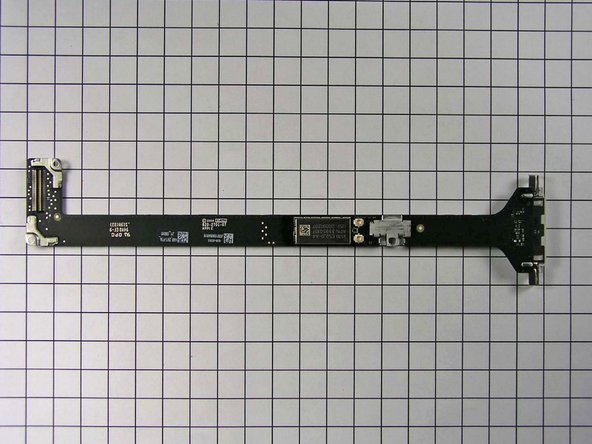

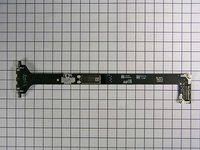
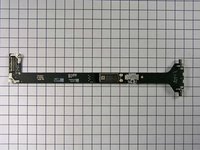


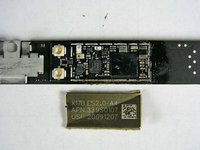
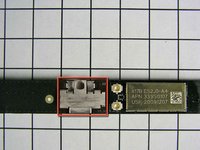

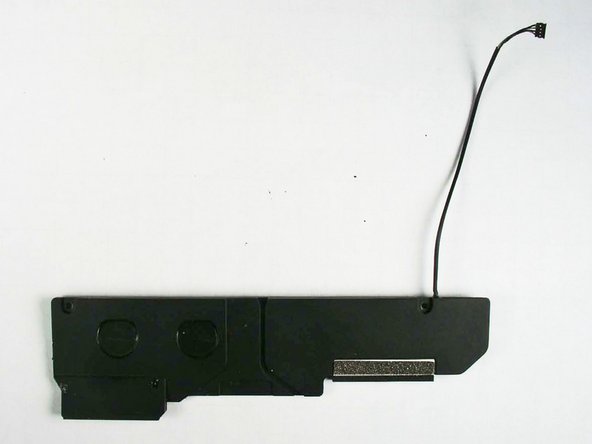
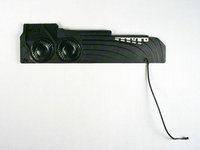
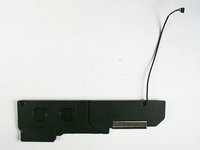


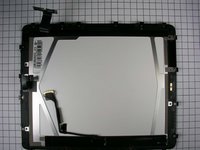
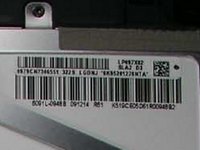

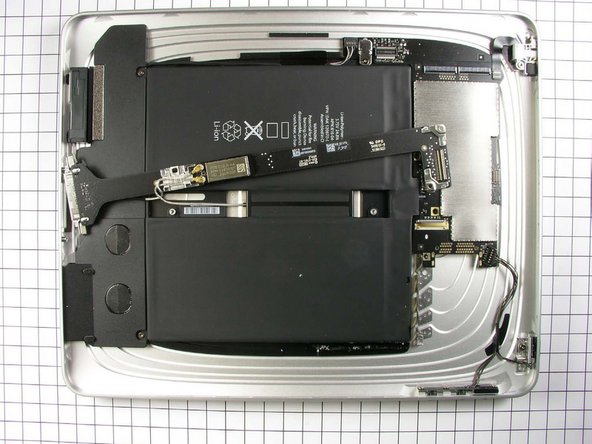
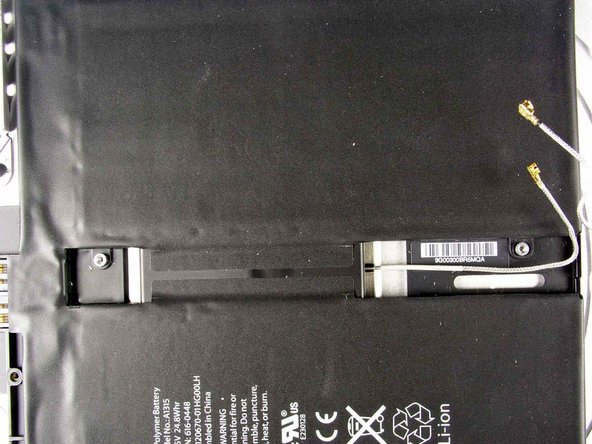


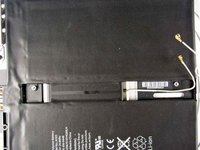

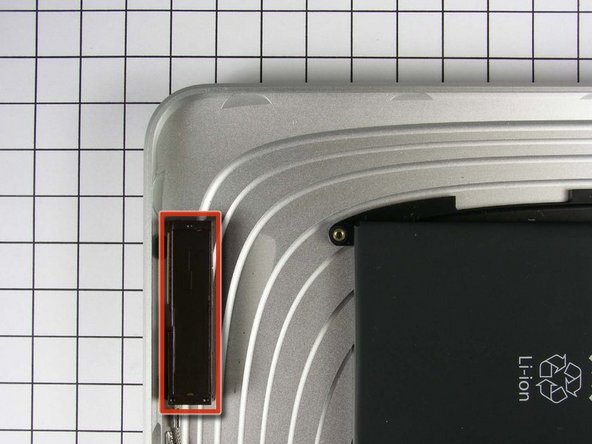
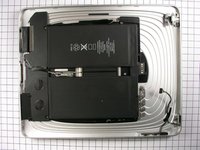








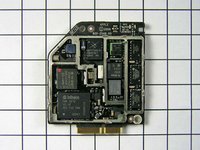
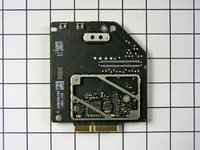


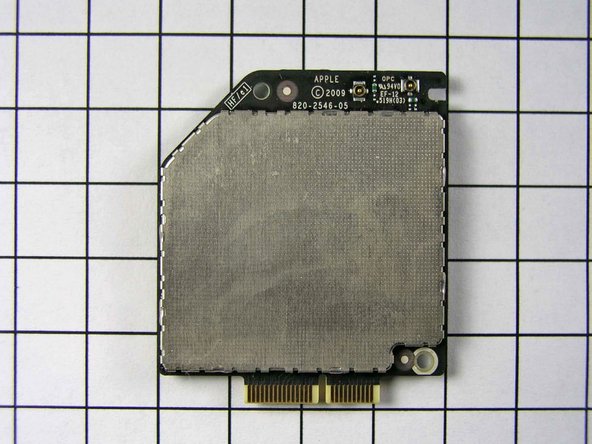
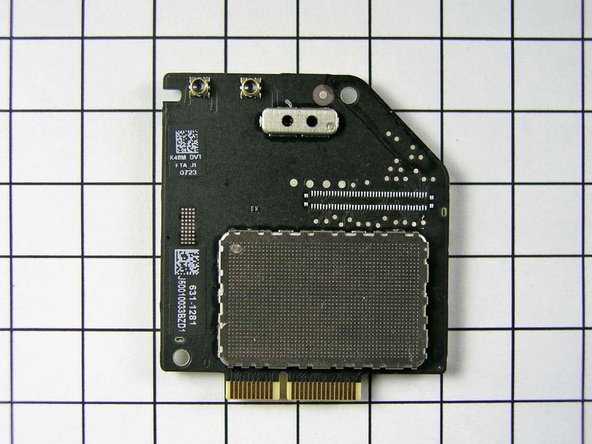
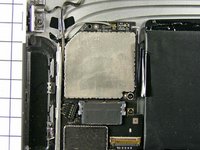

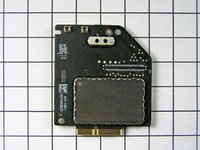



I can't seem to account for the connector on the upper right of the main board, next to the metal screw bracket. What plugs into that? The display only seems to account for the double-wide connector and the two near the center of the system.
CityZ - crwdns2934203:0crwdne2934203:0